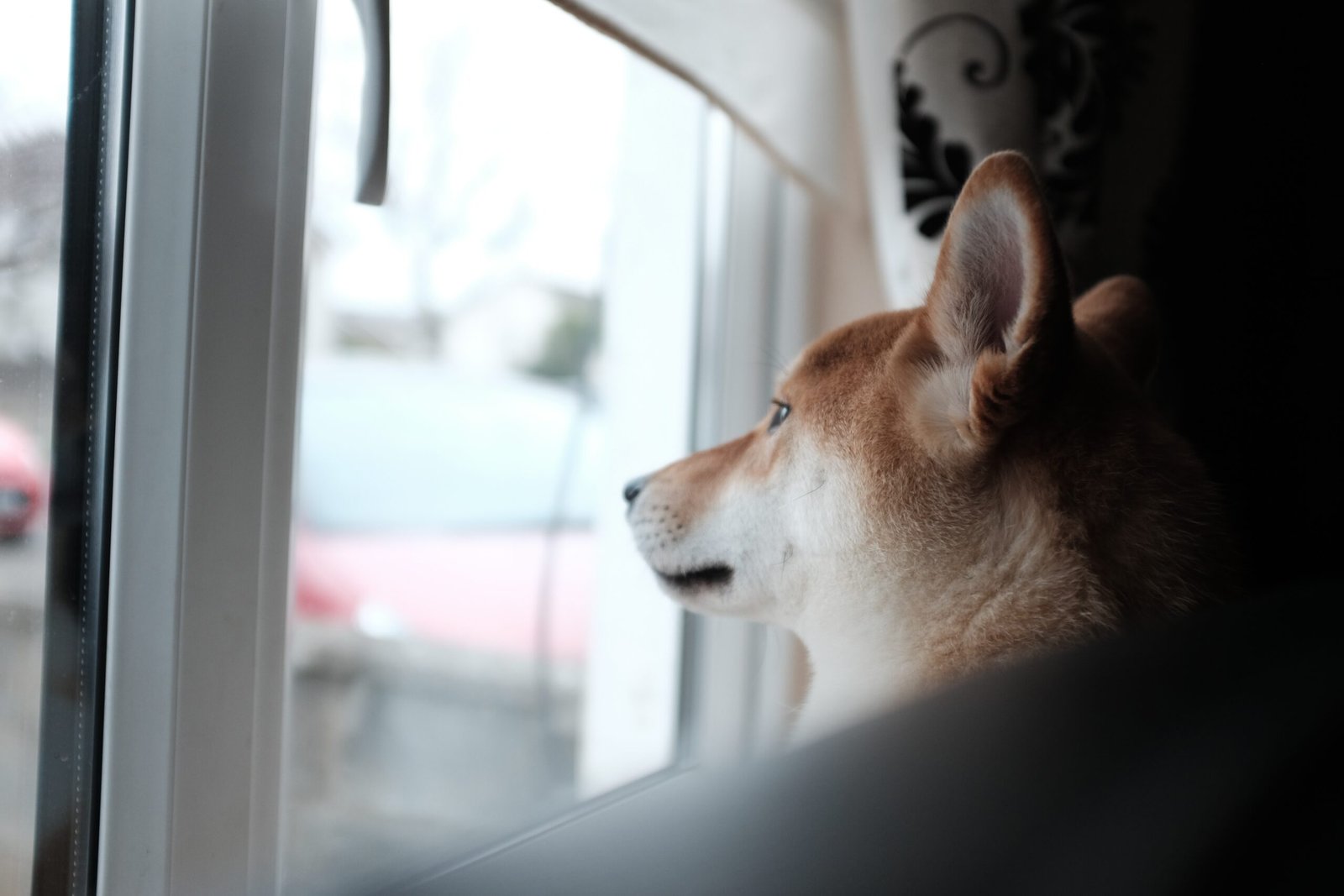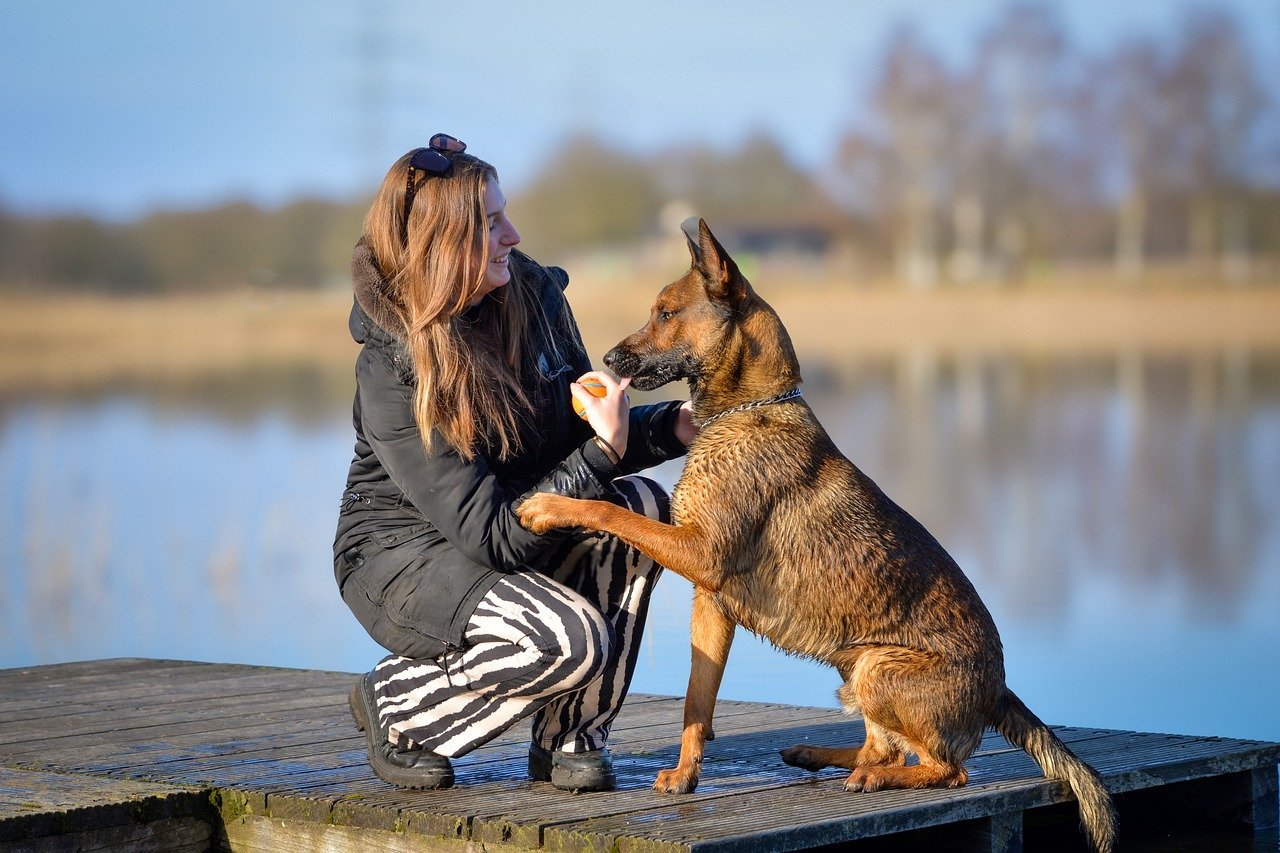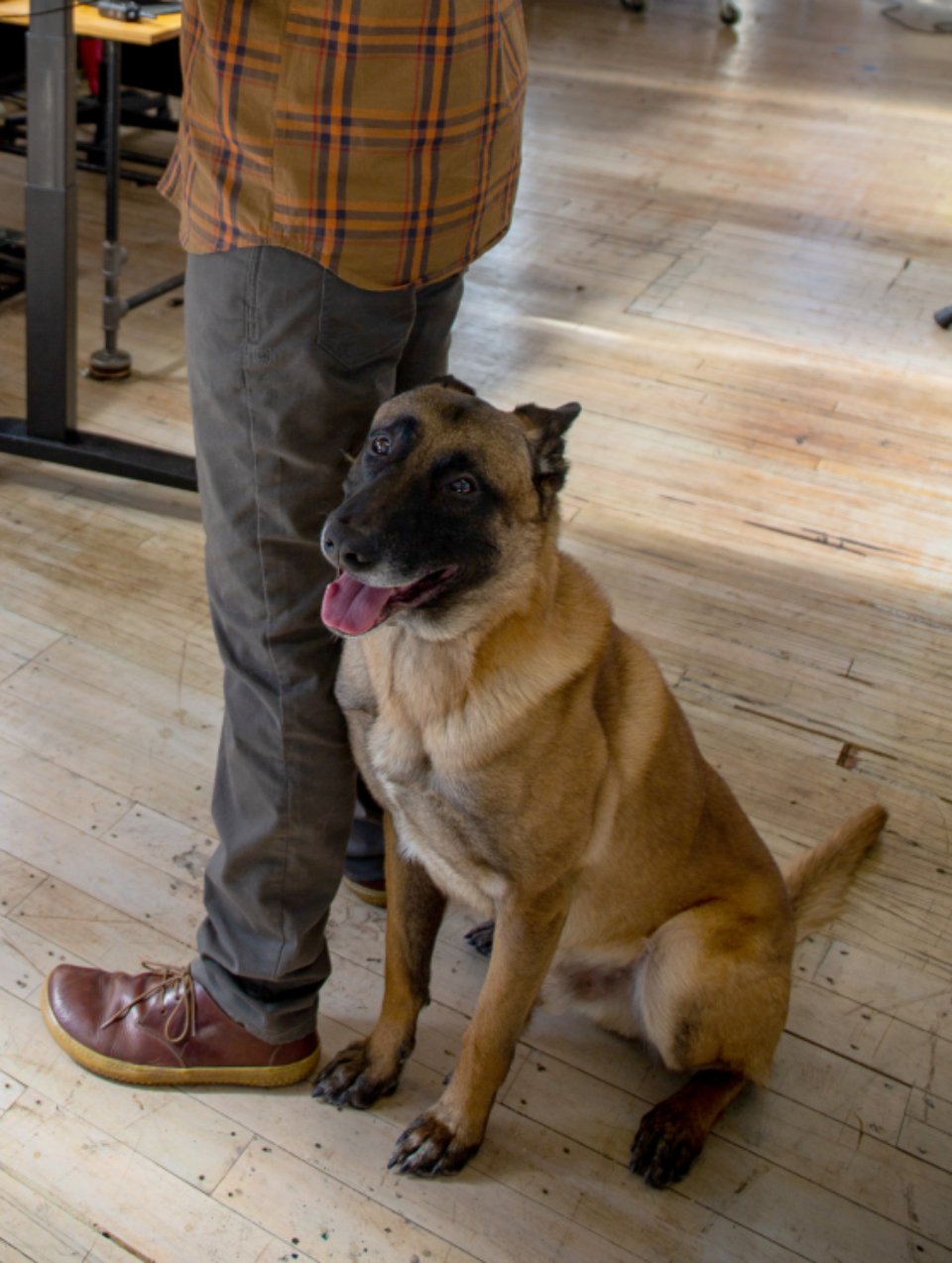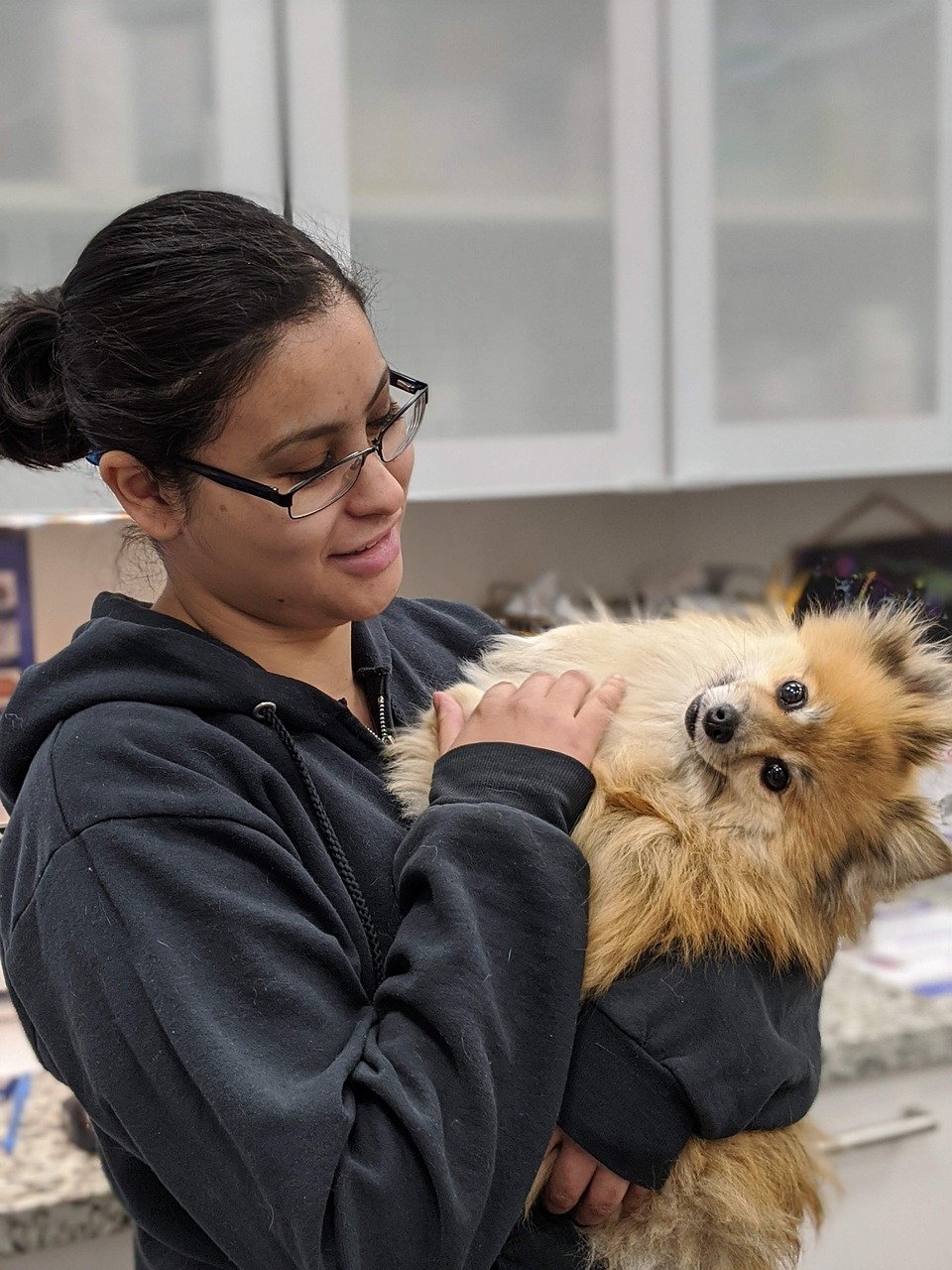If you’ve ever found yourself with a furry shadow, you’re not alone. Many dog owners experience the phenomenon of their canine companions following their every move. Whether you’re heading to the kitchen, going to the bathroom, or just relaxing on the couch, your loyal pup is always a few steps behind. But why do dogs exhibit this behavior? Is it love, curiosity, or something else entirely? This article delves into the intriguing reasons behind this common canine behavior, offering insights that every dog lover will find both enlightening and heartwarming.
Instinctual Pack Behavior
Dogs are descendants of wolves, creatures known for their strong pack mentality. This instinctual behavior is deeply embedded in their DNA, compelling them to stick close to their pack leader. In your household, you are the pack leader, and your dog naturally wants to be close to you. This behavior is not just about following commands; it’s about a deep-seated need to be near the leader for safety and guidance. When your dog follows you, it’s their way of saying, “I trust you.”
Beyond safety, this instinctual behavior fosters a sense of belonging. Dogs feel secure when they are part of a group, and by following you, they reinforce their connection with you. This connection is pivotal for their emotional well-being, as dogs are social animals that thrive on interaction. So, next time your pup shadows your every step, remember it’s an ancient instinct that binds them to you.
Seeking Attention and Affection
Dogs are social animals that crave interaction and attention from their human companions. When your dog follows you around, it’s often a sign that they are seeking some form of acknowledgment. Whether it’s a gentle pat on the head, a belly rub, or just a few kind words, your attention is pure gold to them. They thrive on your affection, and being close to you is their way of asking for it.
Moreover, the act of following you is a form of communication. Dogs can’t verbalize their feelings, so they express their needs through actions. By sticking close, they are essentially saying, “I want to spend time with you.” This behavior reinforces the bond between you and your dog, ensuring that they feel loved and secure in their environment.
Curiosity and Exploration
Dogs are naturally curious creatures, always eager to explore and understand their surroundings. When they follow you, they’re often driven by a desire to see what you’re up to. Every new activity you engage in is an opportunity for them to learn and satisfy their curiosity. For instance, if you’re cooking, they might be interested in the sounds, smells, and movements involved in the process.
This curiosity is also a sign of their intelligence and adaptability. They observe and learn from your actions, which can be beneficial for training and building trust. By including them in your daily activities, you’re not only satisfying their curiosity but also enriching their environment and strengthening your bond.
Separation Anxiety

Some dogs experience separation anxiety, a condition where they become distressed when left alone. This anxiety can manifest as clinginess, leading them to follow you everywhere as a way of ensuring you don’t leave them behind. Dogs with separation anxiety often display signs of stress when they sense you’re about to leave, such as whining or pacing.
Understanding and addressing this anxiety is crucial for their well-being. Gradual desensitization, where you slowly increase the time you spend away from your dog, can help alleviate their fears. Providing them with comforting toys or distractions can also ease their anxiety, making them more comfortable with being alone for short periods.
Bonding and Companionship

One of the most cherished aspects of owning a dog is the unique bond you share. Dogs are naturally inclined to form strong connections with their human companions, and following you is a testament to this bond. It’s their way of showing loyalty and companionship, ensuring they are always there for you, just as you are for them.
This behavior also reflects their desire for mutual interaction. Dogs thrive on companionship, and by sticking close, they’re fulfilling their need for social interaction. This bond is a two-way street, benefiting both you and your dog by providing emotional support and a sense of belonging.
Protection Instinct
Dogs have an inherent protective instinct, which can drive them to follow their owners closely. They see themselves as guardians, always ready to protect their loved ones from potential threats. This instinct is particularly strong in certain breeds known for their protective nature, such as German Shepherds and Rottweilers.
By following you, your dog is ensuring they are close enough to act if needed. This behavior is not just about physical protection; it’s also about emotional reassurance. Knowing they are nearby gives them a sense of purpose and security, reinforcing their role as your loyal protector.
Routine and Habit
Dogs are creatures of habit, and they thrive on routine. If following you has become a part of their daily schedule, it’s likely because they’ve developed a habit over time. Consistent patterns of behavior create comfort and predictability for dogs, making them feel secure in their environment.
This habit is often reinforced by positive experiences. For example, if following you results in rewards like treats, playtime, or outdoor adventures, they’re likely to continue the behavior. Over time, this routine becomes second nature, and they follow you out of habit as much as out of affection.
Food and Treats

Let’s face it, dogs love food. If you’re the primary source of their meals and treats, it’s no wonder they follow you around. They associate you with food, and their keen sense of smell makes it easy for them to detect when you’re preparing or eating something tasty. This behavior is not just about hunger; it’s also about hope and anticipation.
Many dogs have learned that following their owners can lead to rewards, whether it’s a piece of bacon dropped from the breakfast table or a treat from the pantry. This association reinforces their behavior, making them eager to be near you whenever food is involved.
Imitating Behavior

Dogs are observant creatures that often learn by imitating their owners. When they see you move from one room to another, they might follow suit out of curiosity and the desire to mimic your actions. This behavior is a form of social learning, helping them understand their environment by observing your interactions with it.
Imitation also fosters a sense of unity. By copying your actions, dogs feel more connected to you, reinforcing their role as your loyal companion. This behavior is not only fascinating but also heartwarming, as it shows just how much they look up to you as a role model.
Health Concerns

In some cases, a dog following their owner everywhere might indicate underlying health issues. If your dog suddenly becomes more clingy than usual, it could be a sign they’re not feeling well. Dogs often seek comfort from their owners when they’re in pain or discomfort, hoping for reassurance and support.
If you notice changes in your dog’s behavior, such as increased clinginess, it’s important to consult with a veterinarian. Early detection of health problems can lead to better outcomes and ensure your dog remains happy and healthy. Remember, your dog’s behavior is a form of communication, and paying attention can help you address any potential issues promptly.
In conclusion, the reasons your dog follows you everywhere are as varied as they are fascinating. From instinctual behaviors to emotional connections, this loyal companionship enriches the lives of both dogs and their owners in countless ways.

Esther is from India; the heartbeat of South Asia, holding a Master’s degree in Zoology and a postgraduate diploma in Animal Welfare. Her enthusiasm for animal welfare drives her passion and dedication to working for animals, ensuring their well-being, and advocating for their rights. With a solid academic background and hands-on experience, she is committed to making a positive impact in the field of animal welfare. In her free time, she enjoys embroidery and sewing. As a Chennaite from Tamil Nadu, Esther loves Bharathanatyam, an Indian classical dance form.





